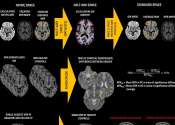Study shows that adaptive immune responses can cause cellular loss in the aging brain
Past neuroscience studies have consistently demonstrated that the aging of the mammalian nervous system is liked with a decline in the volume and functioning of white matter, nerve fibers found in deep brain tissues. Although ...









